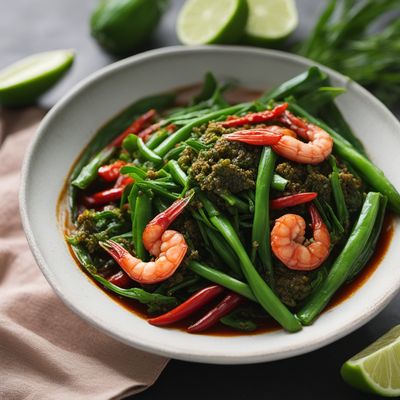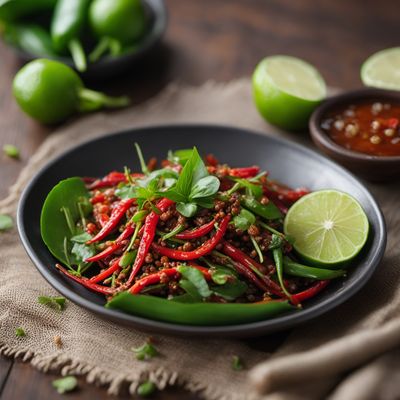
Ingredient
Morning glory
The Vibrant Edible Flower
Morning glory has long, slender stems with heart-shaped leaves that have a glossy appearance. The leaves are tender and have a mild, slightly earthy flavor. The flowers are small and trumpet-shaped, coming in various colors such as white, pink, or purple. When cooked, morning glory leaves become soft and slightly slippery, while the flowers add a touch of elegance to dishes. This vegetable is commonly used in stir-fries, soups, and salads in Asian cooking.
Origins and history
Morning glory is native to Southeast Asia and has been cultivated and consumed for centuries in countries like Thailand, Vietnam, and the Philippines. It is highly valued for its versatility and nutritional content. In some regions, morning glory is considered a staple vegetable due to its availability and affordability.
Nutritional information
Morning glory is a good source of vitamins A and C, as well as iron and calcium. It is low in calories and fat, making it a healthy addition to meals.
Allergens
There are no known allergens associated with morning glory.
How to select
When selecting morning glory, look for fresh, vibrant leaves and flowers. The leaves should be crisp and free from wilting or yellowing. Avoid vegetables with signs of damage or discoloration. It is best to choose young and tender stems for a more enjoyable texture.
Storage recommendations
To keep morning glory fresh, trim the ends of the stems and place them in a glass of water. Cover the leaves loosely with a plastic bag and store them in the refrigerator. Alternatively, wrap the stems in a damp paper towel and store them in a plastic bag. It is best to consume morning glory within a few days of purchase for optimal flavor and texture.
How to produce
Morning glory can be grown in home gardens or purchased from Asian markets or specialty stores. It thrives in warm climates and can be propagated from cuttings or seeds. Regular watering and well-drained soil are essential for its growth.
Preparation tips
Morning glory can be prepared in various ways. It is commonly stir-fried with garlic, ginger, and soy sauce, or added to soups and curries. The leaves can also be blanched and used in salads or as a wrap for fillings. The flowers make a beautiful garnish for dishes or can be used in salads and teas.
Substitutions
Spinach or watercress can be used as substitutes for morning glory, as they offer a similar texture and mild flavor. However, the unique appearance of morning glory flowers cannot be replicated.
Culinary uses
Morning glory is widely used in Asian cuisines, particularly in dishes from Thailand, Vietnam, and the Philippines. It is commonly found in stir-fries, soups, curries, and salads. Morning glory is often paired with garlic, chili, fish sauce, and other aromatic ingredients to enhance its flavor.
Availability
Morning glory is commonly available in Southeast Asian countries, such as Thailand, Vietnam, and the Philippines. It can also be found in Asian markets or specialty stores in other regions.
More ingredients from this category
Recipes using Morning glory

Sambal Kangkong with a Twist
Fiery Fusion: Spicy Sambal Kangkong with a Modern Twist

Spicy Plecing Kangkung with a Twist
Fiery Greens: A Modern Twist on Spicy Plecing Kangkung

Adobong Kangkong with a Twist
Savory Spinach Delight: Adobong Kangkong Reinvented

Spicy Stir-Fried Morning Glory
Fiery Thai Delight: Spicy Stir-Fried Morning Glory